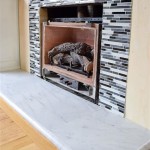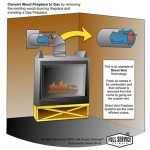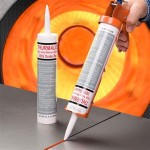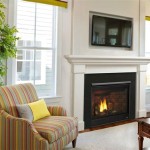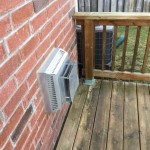DIY Fireplace Screen: A Step-by-Step Guide
A fireplace screen serves a crucial role in any fireplace setup. It acts as a barrier, preventing sparks and embers from escaping the firebox and potentially causing damage or even a fire hazard. Beyond its safety function, a fireplace screen can also enhance the aesthetic appeal of the fireplace area, adding a touch of style and sophistication to the room. While pre-made fireplace screens are readily available for purchase, embarking on a DIY project allows for complete customization to match individual design preferences, fireplace dimensions, and budgetary constraints.
Constructing a fireplace screen offers an opportunity to personalize a home element while simultaneously ensuring safety and potentially saving money. This article provides a comprehensive guide to building a custom fireplace screen, covering material selection, essential tools, step-by-step construction instructions, and design considerations.
Planning and Material Selection
The success of any DIY project hinges on careful planning and the selection of appropriate materials. For a fireplace screen, specific considerations are paramount due to the proximity to heat and potential exposure to sparks. The following factors need to be evaluated before beginning the construction phase.
1. Measuring the Fireplace Opening: Accurate measurements are the foundation of a well-fitting fireplace screen. Measure the width and height of the fireplace opening, taking measurements at multiple points to account for any irregularities. Add a slight overlap (typically 1-2 inches) to these measurements to ensure the screen adequately covers the opening. Record these measurements accurately, as they will directly influence the dimensions of the screen's frame.
2. Choosing the Frame Material: The frame is the structural backbone of the screen. Metal is the most common and recommended material due to its inherent heat resistance and durability. Steel is a popular choice, offering both strength and affordability. Consider using square steel tubing or flat steel bars for the frame, selecting a gauge thick enough to withstand repeated exposure to heat. Wrought iron is another option, providing a more decorative and traditional aesthetic, but it may require more specialized welding techniques to work with. Wood, while aesthetically pleasing, is generally not recommended for the frame due to its flammability and susceptibility to warping from heat exposure. However, if wood is desired for decorative elements, it should be positioned well away from direct flame and heat.
3. Selecting the Mesh Material: The mesh is the protective barrier that prevents sparks from escaping. Steel mesh or woven wire cloth is the ideal material for this component. Look for a mesh with a fine weave (typically ¼ inch or smaller) to effectively contain sparks. Choose a mesh made from a heat-resistant metal, such as stainless steel or galvanized steel. Avoid using plastic or synthetic mesh materials, as they will melt when exposed to high temperatures. Consider the visual aesthetic of the mesh as well. Options range from simple, utilitarian meshes to more decorative woven patterns.
4. Fasteners and Hardware: Secure fasteners are crucial for a sturdy and long-lasting screen. Use screws or bolts appropriate for the chosen frame material. Welding is the strongest method for joining metal frame components but requires specialized equipment and skills. If using screws or bolts, ensure they are heat-resistant and of sufficient size to provide a secure connection. Consider using finishing washers for a more polished look. Hinges, if desired for a folding screen design, should also be made of heat-resistant metal and appropriately sized for the weight of the screen panels.
5. Additional Materials: Depending on the desired design, additional materials may be needed. These might include:
- Heat-resistant paint or coating for the frame.
- Decorative metal accents (e.g., finials, scrolls).
- Handle(s) for easy moving and positioning of the screen.
- Feet or legs to elevate the screen slightly above the hearth.
Construction Process: Step-by-Step Instructions
With the materials secured and the design finalized, the construction process can begin. The following steps outline the basic procedure for building a simple, single-panel fireplace screen. Adjustments may be needed depending on the chosen design and materials.
1. Preparing the Frame Components: Cut the frame material to the required lengths based on the measured fireplace opening dimensions. Ensure accurate cuts for a properly aligned frame. If using metal, use a metal cutting saw or angle grinder with a cut-off wheel. Deburr the cut edges to remove any sharp burrs that could cause injury. If welding the frame, clean the metal surfaces where welds will be made to ensure proper adhesion.
2. Assembling the Frame: Join the frame components to form a rectangular or square frame. If welding, tack weld the corners initially to ensure proper alignment, then proceed with complete welds. If using screws or bolts, pre-drill pilot holes to prevent splitting the material, especially if using wood trim. Securely fasten the corners using screws or bolts and ensure the frame is square and level. For a metal frame, choose screws designed to self-tap or self-drill into metal.
3. Attaching the Mesh: Cut the mesh material to a size slightly larger than the frame opening. Position the mesh over the back of the frame and secure it in place. Several methods can be used to attach the mesh:
- Welding: For metal frames, the mesh can be spot welded to the frame. This provides a very secure and clean attachment.
- Screws and Washers: Use small screws and washers to attach the mesh to the frame. Space the screws evenly around the perimeter of the mesh.
- Staples (for Wood Frames): If using a wood frame (not recommended), use heavy-duty staples to attach the mesh. Ensure the staples are securely embedded in the wood.
- Metal Clips: Small metal clips can be screwed or bolted to the frame to hold the mesh in place. These clips offer a more refined look compared to staples.
Once the mesh is secured, trim any excess mesh material extending beyond the frame. Use metal snips or a cutting wheel for metal mesh.
4. Finishing the Frame: Prepare the frame for finishing. If using metal, clean the surface to remove any grease or dirt. Apply a coat of heat-resistant primer, followed by a coat of heat-resistant paint in the desired color. Allow the paint to dry completely before proceeding. If using wood trim (for decorative purposes only), stain or paint the trim to match the surrounding décor.
5. Adding Decorative Elements (Optional): Attach any desired decorative elements, such as finials, scrolls, or handles. Use appropriate fasteners (screws, bolts, or adhesive) to securely attach these elements to the frame. Ensure that any adhesive used is heat-resistant.
6. Adding Feet or Legs (Optional): Attach feet or legs to the bottom of the screen to elevate it slightly above the hearth. This can improve airflow and prevent the screen from scratching the hearth. Choose feet or legs made from heat-resistant metal or ceramic material.
7. Inspecting and Testing: Thoroughly inspect the completed fireplace screen for any sharp edges, loose fasteners, or other potential hazards. Test the screen by placing it in front of the fireplace and observing its performance during a small fire. Ensure that the screen effectively contains sparks and embers.
Design Considerations and Customization
The DIY approach offers unmatched flexibility in customizing the fireplace screen to align with individual tastes and the overall aesthetic of the room. Several design elements can be tailored to achieve a desired look.
1. Frame Style: The frame's design contributes significantly to the screen's visual impact. Options range from simple, minimalist frames to more ornate and decorative designs. Consider the architectural style of the room and choose a frame style that complements it. A modern room might benefit from a clean, geometric frame, while a traditional room might call for a more elaborate, scrolled frame.
2. Mesh Pattern: The mesh pattern offers another opportunity for customization. While functionality is paramount, different mesh patterns can subtly alter the screen's appearance. Woven wire cloth provides a more textured look compared to simple steel mesh. Consider a decorative mesh pattern for a more distinctive screen.
3. Color and Finish: The color and finish of the frame and decorative elements can significantly impact the screen's overall aesthetic. Choose colors and finishes that complement the surrounding décor. A black or dark gray finish is a classic and versatile choice, while brighter colors can add a pop of personality. Consider using metallic finishes, such as bronze or copper, for a more elegant look. The finish should be durable and heat-resistant.
4. Folding vs. Single-Panel Design: A folding screen offers greater flexibility in terms of positioning and storage. A single-panel screen is simpler to construct but may be less versatile. The choice between a folding and single-panel design depends on individual needs and preferences. If the fireplace is rarely used, a folding screen can be easily stored away when not needed. If the fireplace is frequently used, a single-panel screen may be more convenient.
5. Incorporating Decorative Elements: Adding decorative elements, such as finials, scrolls, or handles, can elevate the screen's aesthetic appeal. Consider incorporating elements that reflect personal interests or hobbies. For example, a homeowner with a passion for nature might choose finials shaped like leaves or animals.
By thoughtfully considering these design elements, a truly unique and personalized fireplace screen can be created that enhances both the safety and aesthetics of the fireplace area. Remember safety is the primary concern, so all selections must ensure the screen effectively contains sparks and embers.

Diy Faux Wood Log Fireplace Screen A Kailo Chic Life

Diy French Country Fireplace Screen Edith Evelyn

How To Make A Barn Door Style Fireplace Screen Designertrapped Com

Diy Faux Wood Fireplace Screen De Manor Farm By Laura Janning

20 Diy Fireplace Screen Ideas How To Make A Cover

Diy Cedar Planked Fireplace Screen Cedarsafe

20 Diy Fireplace Screen Ideas How To Make A Cover

Diy Fireplace Screen With Birch Log Slices Field Court

9 Creative And Chic Diy Fireplace Screens Shelterness

My Diy D Fireplace Screen For Under 30 Less Than Perfect Life Of Bliss
Related Posts

